Developing a Mood for a Portrait Sitting
I channeled the work of Edvard Munch in these portraits of Covid long-haulers
At the end of last year, the New York Times Magazine commissioned me to make portraits of Covid long-haulers for the feature “What If You Never Get Better From Covid-19” by Moises Velasquez-Manoff. It was a heartbreaking story of people who had survived Covid, only to have their lives upended. Kate Porter, 36, and her daughter Adria, 12, were still experiencing severely elevated heart rates, shortness of breath, debilitating fatigue, and insomnia. Margot Gage Witvliet, 38, a professor in epidemiology at Lamar University in Texas, had been sick for nine months. Lauren Nichols, 32, developed shingles and suffered bouts of insomnia. Some of the people I visited showed me the place in their home where they would curl up and sleep when they could no longer handle their previously normal day-to-day lives. For many of the portraits, that's where I photographed them.
When I embark on a portrait series I always develop a mood board of artistic references. I do my best not to deny outside influences, but rather acknowledge the shared visual languages we all participate in. When I began conceptualizing the tone of this work, the intensity and psychological turmoil in Edvard Munch’s paintings came to mind; they encapsulated the pain and insomnia I had heard from the subjects.
Munch’s style was too expressionistic for the editorial portrait shoot I was tasked with—the photography needed to depict people with more realism—but the emotional value of his work became my reference point. The mood needed to feel like Munch’s work, not necessarily not look like it.
I believe my work finds its best success when I am aware of outside influences and deliberately tilt my hat to them. There were years in my career as a photographer that I naively attempted to operate in a bubble and find a visual language that was exclusively mine. I soon realized that nothing I do is completely original, it's always an iteration or evolution of a previous expression.
Instead of working with a strobe for this series, I decided to use constant light. This way I could shape the light, manipulate it, and see the results quickly, without having to test it and review it. This allowed me to prioritize engaging with my subjects instead of managing toe lighting equipment. I had decided not to work with an assistant because I didn’t want to take another person into the subjects’ homes. I knew I needed to create a space to work with people emotionally and an assistant would compromise that. I also knew I could get a quality of light from constant light that would feel more ambient and film-like, and would create a mood that felt like people were suspended in a dream, much like the work of Edvard Munch.
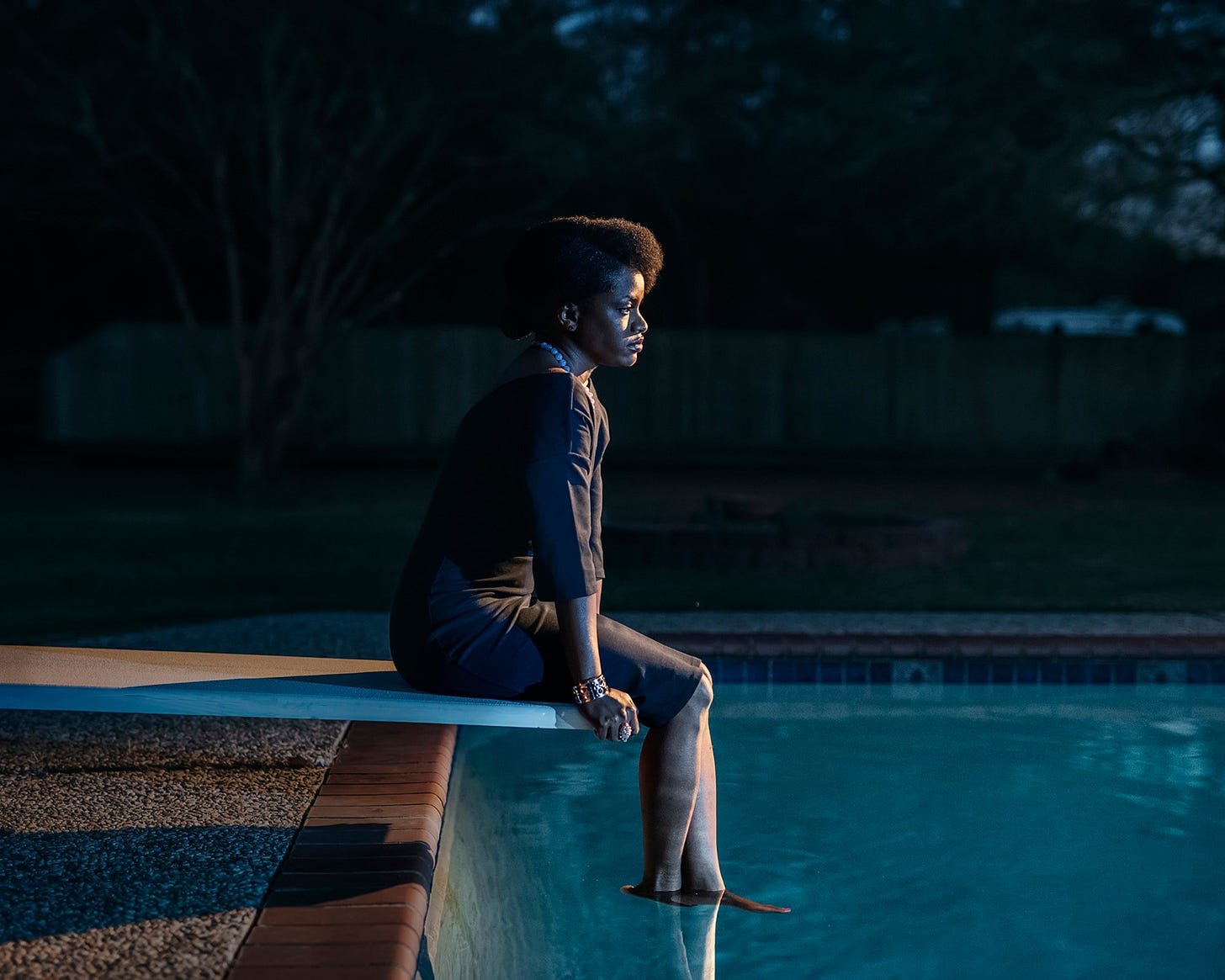
Equipment and Specs
These portraits were made with a DSLR and either a 50 mm or 35 mm lens. For the key light, I used either the Ari 150 or the 50W modeling light in the B2 flash head. (Yes, just the modeling light, not the flash.) The Ari was flagged with barn doors, and for the B2 I used a piece of cine foil rolled up as a makeshift snoot. Both gave a warm constant light.
For the fill light, I used the small LED panel with a blue gel. This was used at a lower power and placed lower than the subject's face. The LED with gel gave a cool cast to the shadows and caught extra light in the eyes. It also gave some second shadows, which are normally avoided in most lighting styles, but in this case, I liked the complexity they added to the lighting.
The camera shutter was set between 1/15 and 1/30, slow enough to allow me to capture detail in the scenes/background that was relatively dark. The camera ISO was set between 1000-2000, giving the sensor the ability to capture the ambient light, while also recording the LED lights at their low powers.
DSLR
35 mm and 50 mm Lens
Arri 150 Tungsten Fresnel (with barn doors)
Profoto B2 ( I used the 50W LED modeling light, not the strobe)
LED small 5x4 panel
Blue gel
Grid
Cine foil
Lighting Diagram: Kate and Adria
Lighting Diagram: Margot
Thank you for reading. You can follow me on Instagram here.
If you have questions about photography you’d like to have me answer, get in touch at mail@adamfergusonstudio.com

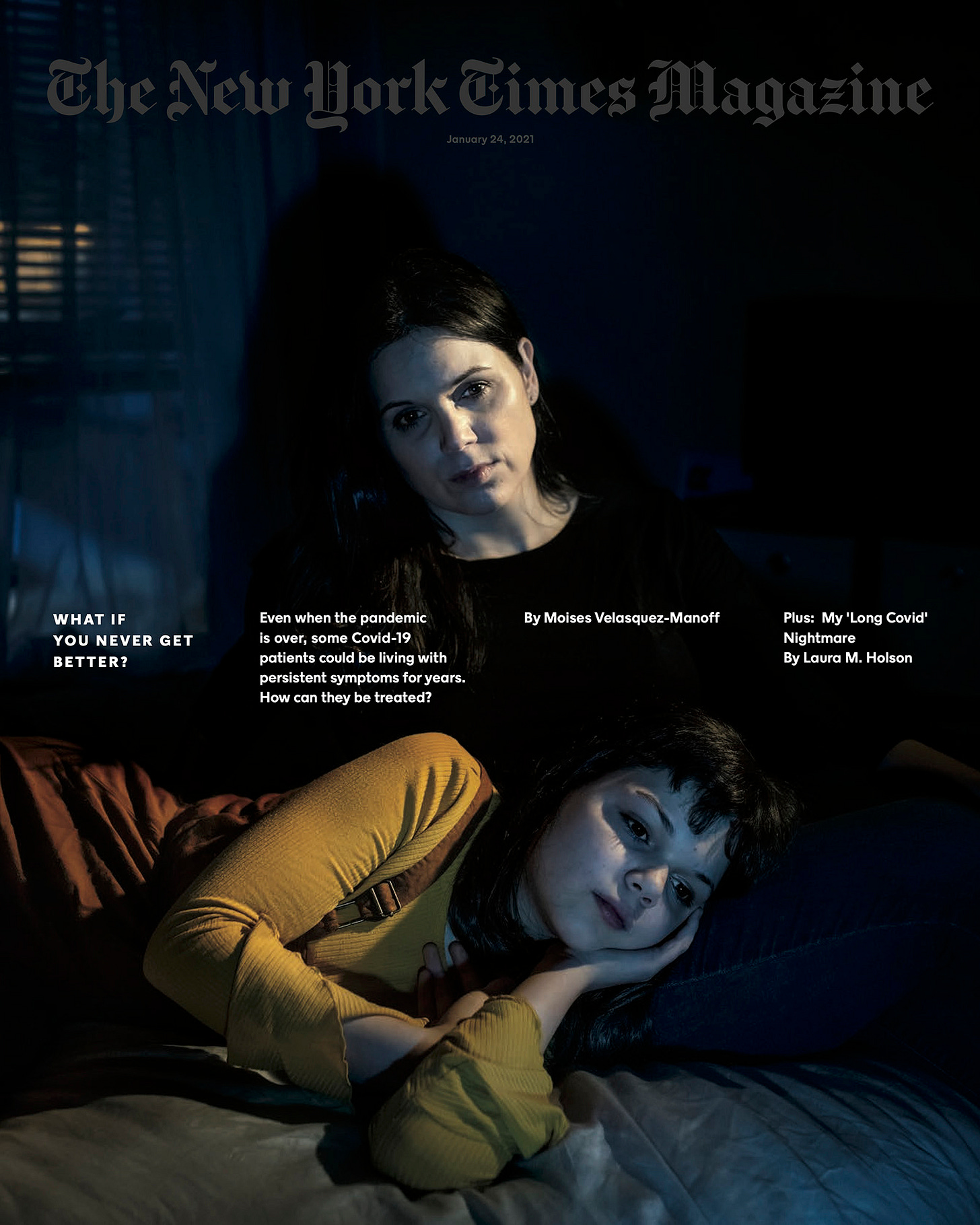

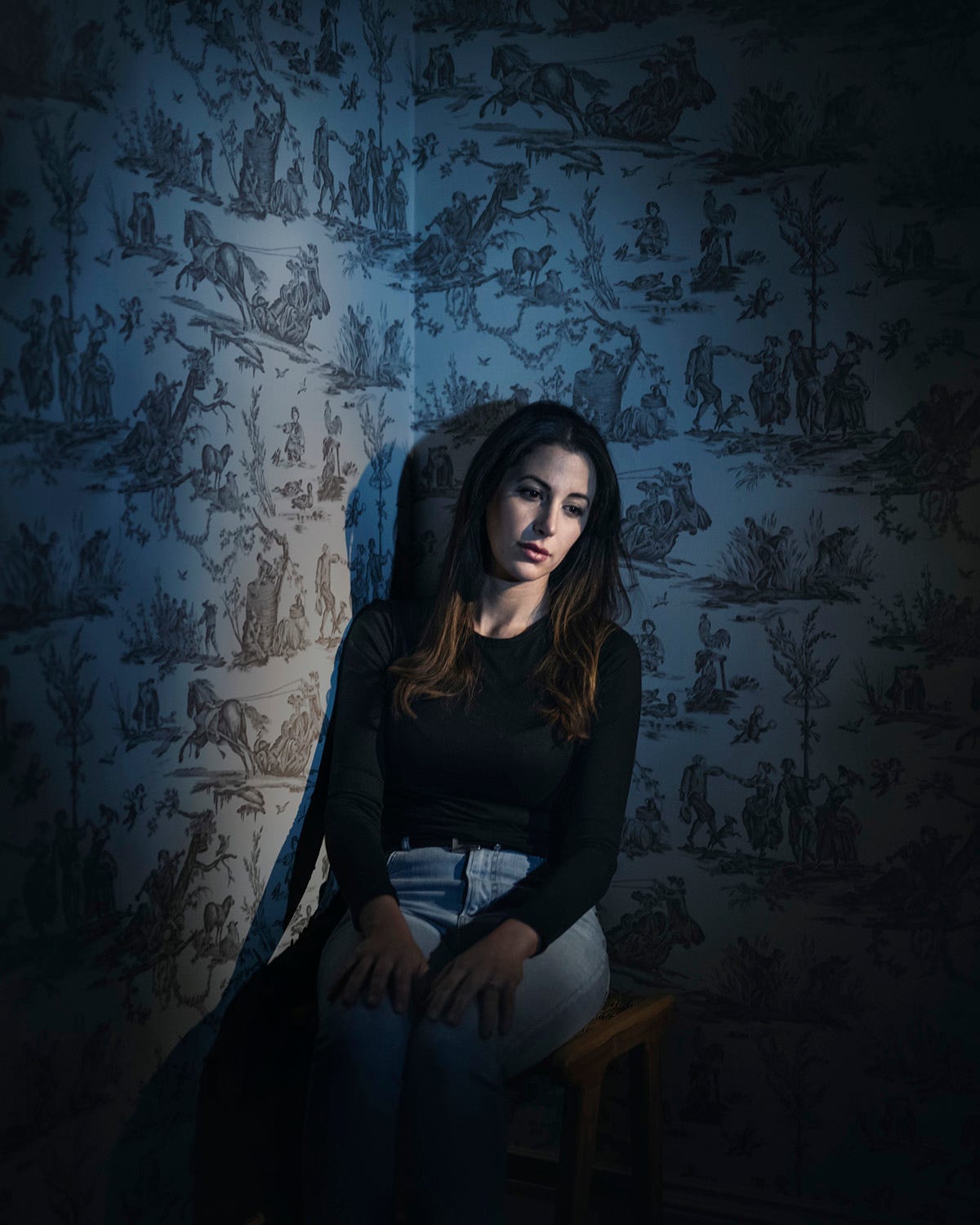
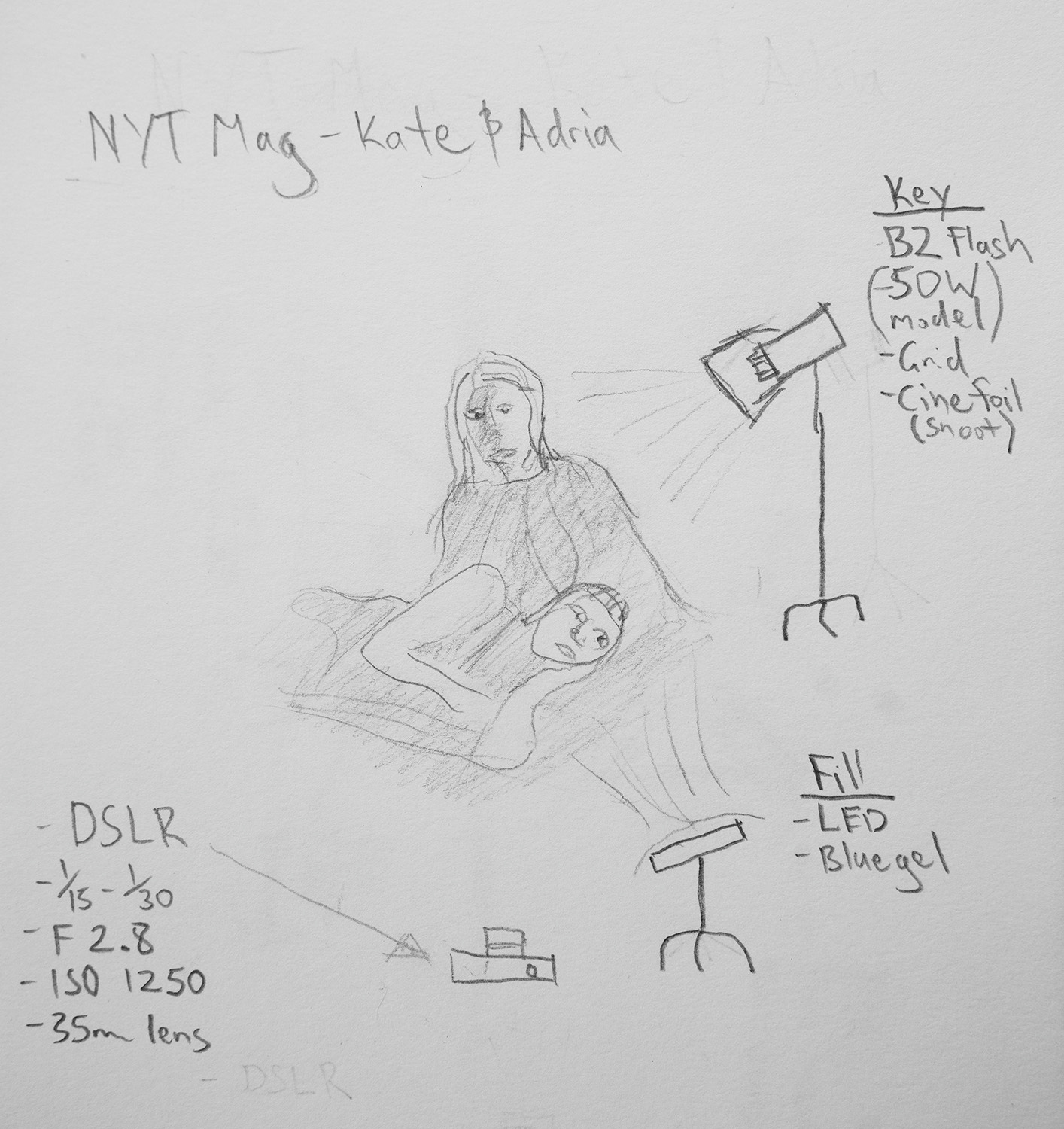
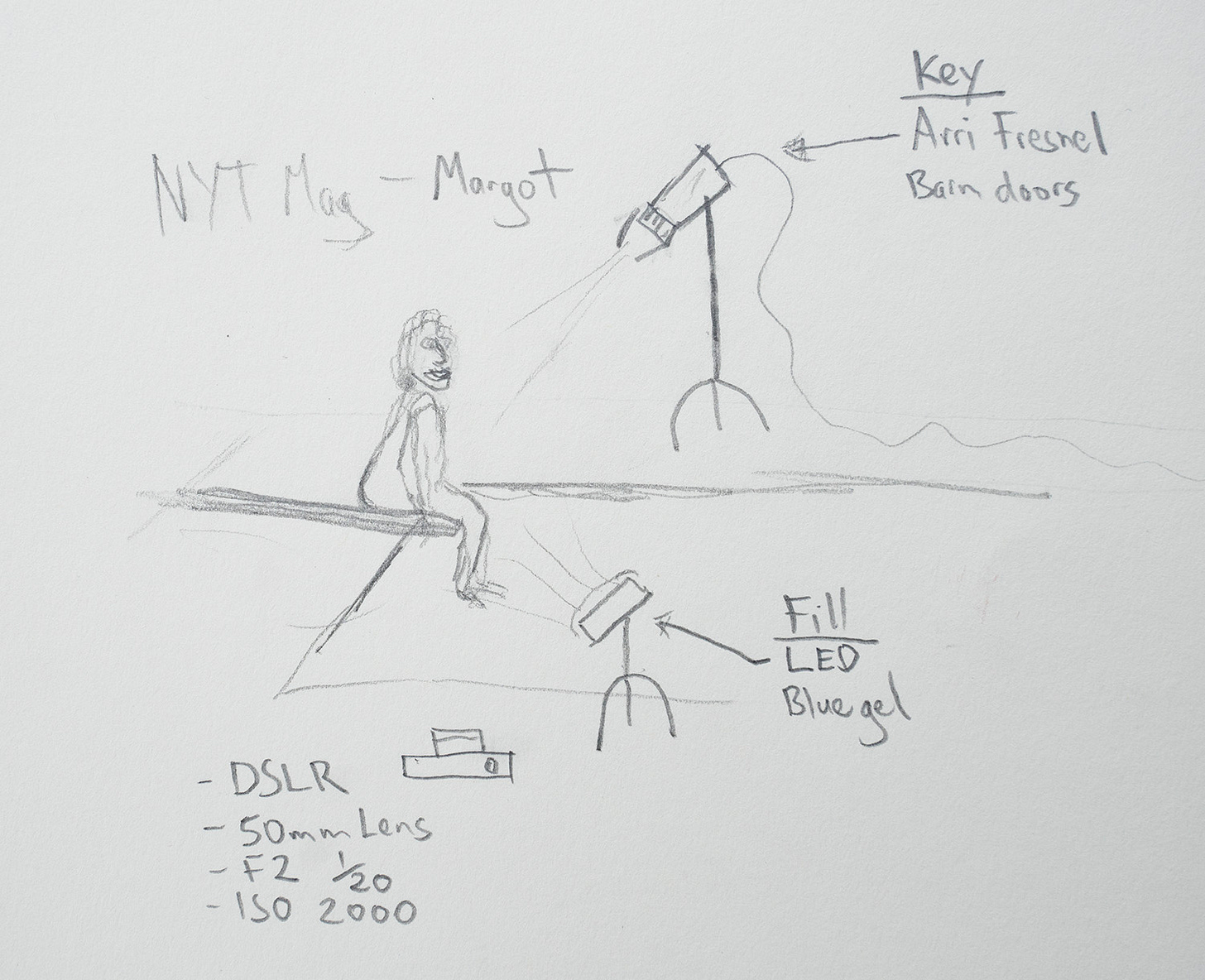
Hi Adam,
Your mix of reflexiveness about the process and openness about the technical aspects of your work have really influenced how I communicate my own. Thank you, your simple honesty is an amazing help in guiding other photographers.